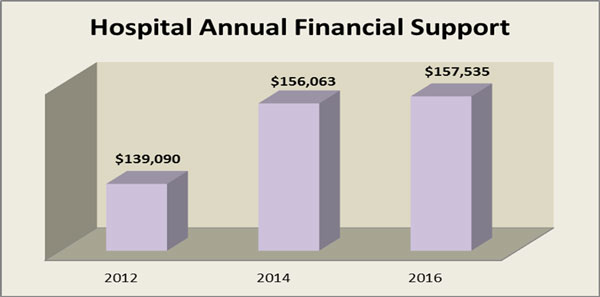Unlike other hospital clinical services, hospitalist services rarely grow into a self-sustaining state. Patient collections on average cover less than 60% of total hospitalist program expenses (which are primarily variable expenses). Thus, as a hospitalist program grows, so do the aggregate financial needs. The chart below illustrates recent trends in subsidies provided by hospitals (source SHM):

The ever-increasing levels of financial support create a “Hospitalist Value Paradox”: hospital executives know they can’t afford an unstable Hospitalist Program, yet are confounded by the cost of a stable one. This Paradox may skew hospital perspectives, leading to attenuated responses to hospitalist needs.
It is difficult for hospitalists to fully understand this Value Paradox. Hospitalists know they provide good patient care, and that the hospital is dependent upon them. Thus, any hesitation on the part of hospital executives to quickly respond favorably to needs is baffling to hospitalists.
Regardless of how this phenomenon may impact hospital-hospitalist relationships, it is difficult to imagine a reversal or even a stagnation in the financial subsidy trendline. It is therefore extremely important that hospitalist leaders work diligently to understand how their programs may create even greater value for host facilities.


